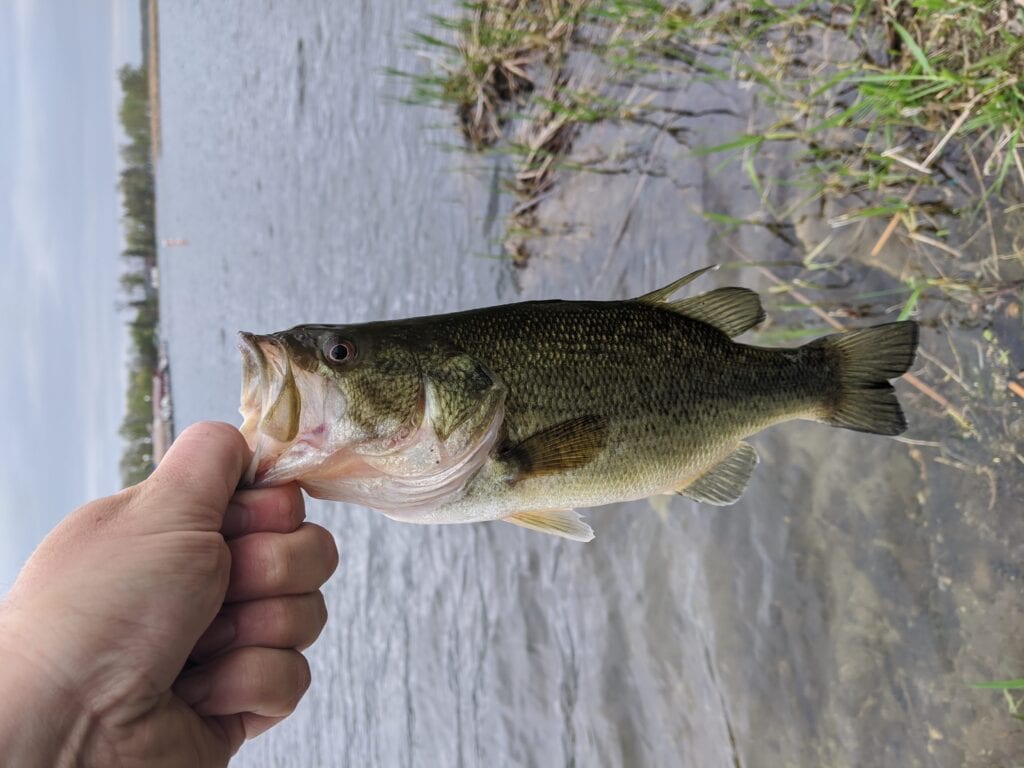Integral Environmental Factors Influencing Bass Migration
The onset of autumn triggers a series of environmental changes that directly influence the behavior of bass across various aquatic systems. This makes Fall transition bass fishing a unique time and perhaps one of the best times to land a new personal best. Be it man-made lakes, natural lakes, or river systems, these alterations play a pivotal role in determining bass locations:
Water Levels: Rainfall, along with water management practices, can drastically alter water levels. Elevated levels often push bass closer to the shores or into newly submerged terrains teeming with food.
Current: While man-made reservoirs often have regulated currents, natural river systems experience organic shifts in flow during fall. Bass use these currents as routes to migrate and locate prey.
Water Temperature: The cooling waters of autumn stimulate bass metabolism, increasing their feeding activities and driving them towards shallower regions.
Daylight Hours: Diminishing daylight prompts bass to maximize their feeding window, preparing for the challenging winter months ahead.
Bass Pursuit: The Migration of Threadfin and Gizzard Shad
Irrespective of the type of water body, a fundamental driver of bass movement during the fall transition is their pursuit of primary forage fish, notably the threadfin and gizzard shad. As these baitfish seek refuge and sustenance in the shallows, bass, in their relentless pursuit, venture into regions such as the backs of coves and creek arms.
Phytoplankton, nourishing the shads, thrive in these cooler, shallow waters, making these regions particularly attractive for both predator and prey.
Man-made Lakes vs. Natural Lakes: Contrasting Bass Behavior
Autumn’s embrace brings about discernible shifts in aquatic life, with bass migrations being a particular point of interest. Delving deeper into their behavior across man-made and natural lakes uncovers stark contrasts:
Man-made Lakes: Predictability Amid Structure
Man-made reservoirs are crafted with specific purposes in mind, often for flood control, irrigation, or hydroelectric power generation. The consequent structured layout gives them distinctive features. Bass, attuned to these defined environments, exhibit behaviors that become somewhat foreseeable for the informed angler.
Channels in these lakes, primarily designed for water flow, become migration paths for bass, especially during transitional seasons. Similarly, flats offer abundant forage opportunities, making them prime feeding grounds. Points, the extended sections of the shore into the water, are strategic spots. They not only allow bass to exploit varying depths quickly but also serve as excellent ambush zones, especially when baitfish are on the move.
Natural Lakes: Navigating a Complex Maze
In stark contrast, natural lakes, carved by nature’s forces over millennia, present a labyrinth of terrains and structures. The absence of a predictable layout means bass behavior here is nuanced and diversified.
Weed lines in natural lakes are hotspots. These underwater forests harbor a plethora of microorganisms and smaller fish, making them ideal hunting grounds for bass. Drop-offs, the underwater cliffs, are vital transitional zones. As temperatures drop during fall, these zones offer bass a gradient of temperatures to choose from, allowing them to stay active. Furthermore, submerged structures, be it rocks, fallen trees, or sunken artifacts, act as sanctuaries. They provide bass with concealment, protection, and strategic vantage points to launch surprise attacks on unsuspecting prey.

In essence, while the underlying motives of feeding and protection drive bass in both environments, the way they navigate and exploit their respective terrains during the fall transition varies profoundly between man-made and natural lakes.
Deciphering Bass Movements in River Systems
Navigating river systems, especially during the dynamic fall transition, offers anglers a distinctly challenging yet rewarding experience. The riverine environment, with its ever-flowing waters and myriad structures, demands a more nuanced understanding of bass behavior.
Roles of Current Seams
Current seams—those intriguing junctures where the languid pace of river waters kisses the frenzy of rapid currents—are goldmines for bass anglers. These seams are essentially ecological buffet lines. Bass, leveraging their instinctual prowess, strategically position themselves here. The slower sections offer them a momentary pause from the relentless push of river waters. Concurrently, the faster-moving sections usher in a steady stream of food, from disoriented baitfish to aquatic insects. The convergence of these waters results in a turbulent interface, trapping and disorienting prey, making them easy targets for opportunistic bass.
Dependence on River Structures
Structures in river systems function as both refuges and hunting grounds. Boulders break the current, offering calmer pockets where bass can conserve energy. Downed trees, with their intricate network of branches, create complex zones of ambush and protection. Here, bass can effortlessly lie in wait, striking prey sheltering amid the branches or passing by unsuspectingly. Undercut banks, often eroded by the river’s flow, provide a shadowed recess where bass can lurk, shielded from both predators and the sun, emerging swiftly to feed.
Shad Movements in Rivers
Bass, ever in pursuit of their favored forage, keenly observe the movements of threadfin and gizzard shad. As fall progresses, these baitfish seek the relative calm of backwaters, sloughs, and eddies. Slower-moving sections of the river, rich in nutrients and shelter, become congregation points for these shad. Bass, recognizing these zones as forage hotspots, gravitate towards them, setting the stage for some of the most exhilarating angling moments of the season.
In sum, river systems, with their multifaceted landscapes and continuous flow, necessitate a profound understanding of bass behavior. Yet, for those willing to decipher these intricate patterns, the rewards are bountiful.
Fall Transition Bass Fishing Provides Enormous Opportunities
The fall transition isn’t just a change in scenery above the waterline. It instigates intricate migrations and behaviors in bass across diverse aquatic environments. Recognizing the variables at play, from baitfish movements to environmental cues, equips the astute angler with the knowledge to effectively locate and target bass during this dynamic season.
The allure of fall transition bass fishing lies not just in the vibrant tapestry of autumnal colors mirrored on the water’s surface, but also in the profound shifts within the aquatic realm. As temperatures drop and nature begins its preparation for winter, bass movements become a riveting dance of survival and sustenance. Fall transition bass fishing offers anglers a front-row seat to this spectacle, unveiling dynamic behaviors and unique challenges across varied water bodies. It beckons with the promise of not just bountiful catches, but also enriching experiences.
Every cast during this period is a lesson, every tug a testament to nature’s intricate balances. For the keen observer and passionate angler, the fall transition is less about the thrill of the catch and more about understanding and respecting the complexities of freshwater ecosystems. Embrace this season wholeheartedly, and the waters will surely reward you with memories that resonate long after the leaves have fallen.

